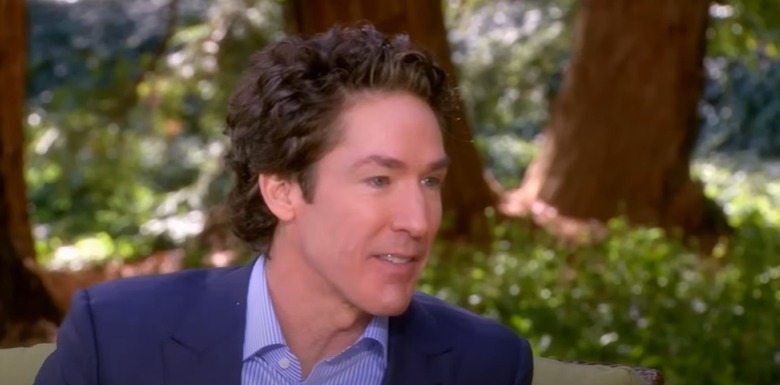In addition to constructing a church, Joel Osteen built a media empire and a spiritual phenomenon that fills stadiums. Many pastors still lead congregations from tiny chapels, but Osteen preaches from a former NBA arena. The Compaq Center, the former home court of the Houston Rockets, now pulsates once every week with a message focused on optimism, self-belief, and individual success. His fortune, which is sometimes valued at between $50 million and $100 million, is a particularly striking illustration of the harmony that can be achieved between religion and business.
Remarkably, since 2005, Osteen has insisted that he receives no payment from Lakewood Church, though it is rumored to receive over $43 million annually. Instead, his primary revenue streams include broadcast sermons, media royalties, paid speaking engagements, and his 14 best-selling books to date. Reports state that the second book alone made about $13 million. By offering weekly reinforcement to more than 20 million people across more than 100 countries, Osteen has created an extremely profitable company model that many opponents view as more branding than ministry.
| Field | Details |
|---|---|
| Full Name | Joel Scott Osteen |
| Date of Birth | March 5, 1963 |
| Birthplace | Houston, Texas, USA |
| Occupation | Pastor, Televangelist, Author |
| Net Worth | $100 million (estimated) |
| Spouse | Victoria Osteen |
| Children | Jonathan and Alexandra Osteen |
| Church | Lakewood Church |
| Annual Church Collections | Approx. $43 million |
| Main Income Sources | Book Sales, Public Speaking, Media Royalties |
| Notable Property | 17,000 sq. ft. mansion worth $14–$16 million |
| Reference | Joel Osteen – Wikipedia |
At a time when people are tired of tradition but in dire need of hope, he used witty storytelling to transform his message into something genuinely powerful. His teachings barely touch on sin and punishment. Instead, they place a strong emphasis on destiny, fulfillment, and emotional healing. This approach, which is notably more consistent with personal growth gurus like Tony Robbins than with fire-and-brimstone preachers, has proven to be remarkably compelling and clear for millions of followers.

Behind the camera, Osteen’s journey began. For the father, John Osteen, a Baptist pastor who had led Lakewood Church for 17 years, he discreetly composed lectures. Joel had no formal theological training, but he filled in for John after he died in 1999. Amazingly, the church relocated to the Compaq Center in just four years after undergoing a $105 million renovation. Leaders like Nancy Pelosi and Rick Perry attended the grand reopening, which marked a turning point in Osteen’s journey from television technician to national hero.
Over the past ten years, Osteen has increasingly been compared to other televangelists, including Joyce Meyer and Kenneth Copeland. All three promote the prosperity gospel, which maintains that material success is a natural consequence of spiritual commitment. But Osteen, who is notably more camera-ready and culturally adaptable, has taken on the role of public face for this philosophy. His name is often at the center of discussions about whether faith-based empires still represent spirituality or simply wealth.
Growing skepticism about mega-churches has led to a greater scrutiny of Osteen. Only roughly $1.2 million of Lakewood Church’s $89 million in revenue was allocated to charitable causes, according to the organization’s 2017 financial reports. That’s just 1.3%. Critics claim that this allocation seems incredibly low for a charity that is based on charitable giving. Others point to Lakewood’s $4.4 million in federal pandemic aid, which was later reimbursed, as an illustration of how it can be difficult to distinguish between private wealth and public assistance.
However, public support remains strong. On Sundays, Lakewood’s arena-style sanctuary typically has 17,000 seats. On social media, his sermons are well-liked. His constant smiles are either dismissed as cunning or hailed as comforting. At any rate, it is extremely dependable. Unlike firebrands who grab attention with controversial statements, Osteen speaks in a way that empowers, uplifts, and inspires. Rather than offering criticism, his message is one of encouragement. And for many people, that distinction is particularly meaningful.
Politicians and celebrities have been drawn to him because of his influence. His attendance at Easter events at the Obama White House and his frequent interviews with Oprah Winfrey demonstrate a cultural significance that goes far beyond the pulpit. Osteen, a hybrid of a preacher, motivational coach, and corporate leader, has strategically positioned himself at the intersection of inspiration and power.
In sharp contrast to the decline in religious affiliation in America in recent years, Lakewood has continued to grow, especially online. Osteen’s popularity, according to some, shows how faith can become media-savvy and emotionally appealing without losing its meaning. For others, it raises enduring questions. Is it possible for celebrity branding and spiritual leadership to coexist? Can the church be regarded as sacred when its leader owns a $16 million mansion?
